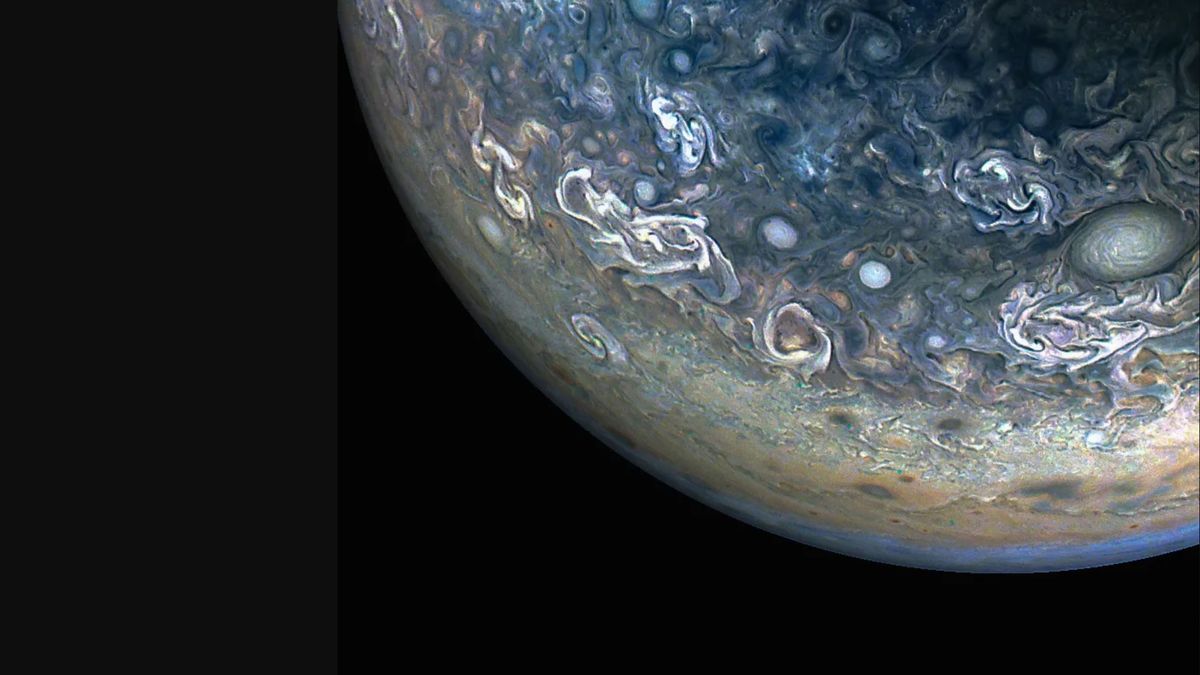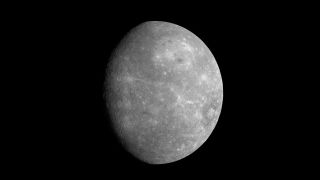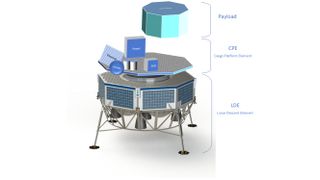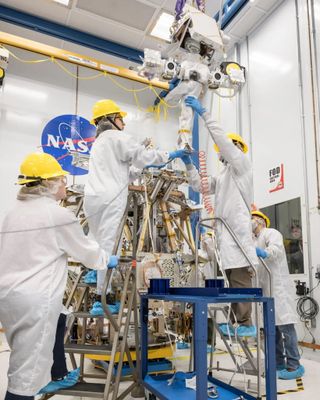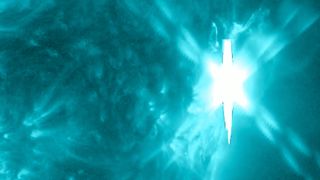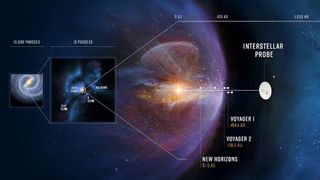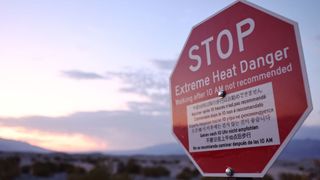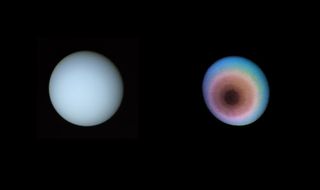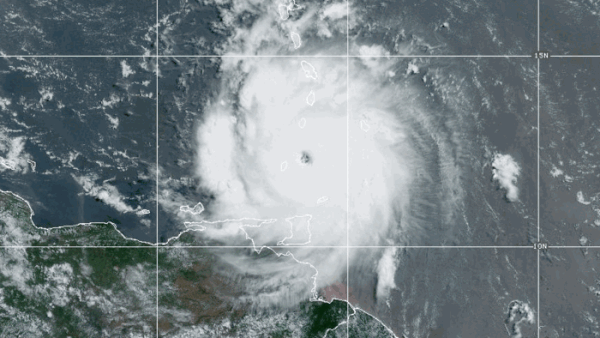Vivid clouds swirl across Jupiter’s skies like colorful brushstrokes across a painting in a new photo from NASA‘s Juno spacecraft. The image, taken during the spacecraft’s 61st close flyby of Jupiter on May 12, 2024, hones in on activity in the planet’s northern hemisphere. Juno was approximately 18,000 miles (29,000 kilometers) above Jupiter’s cloud tops when it captured this new view, highlighting the planet’s persistent storms and colorful bands created by strong winds in its atmosphere. “It provides a detailed view of chaotic clouds and cyclonic storms in an area…
Read MoreTag: Solar System
Mercury has a layer of diamond 10 miles thick, NASA spacecraft finds
The solar system’s tiniest planet may be hiding a big secret. Using data from NASA‘s MESSENGER spacecraft, scientists have determined that a 10-mile-thick diamond mantle may lie beneath the crust of Mercury, the closest planet to the sun. Mercury has long puzzled scientists as it possesses many qualities that aren’t common to other solar system planets. These include its very dark surface, remarkably dense core, and the premature end of Mercury’s volcanic era. Also among these puzzles are patches of graphite, a type (or “allotrope”) of carbon on the surface…
Read MoreEurope on the moon: ESA targeting 2031 for 1st ‘Argonaut’ lunar lander mission
A European moon lander being developed to provide the continent autonomous access to the moon is targeted to launch in 2031, according to a development call published last week by the European Space Agency (ESA). The robotic lander, called Argonaut, is expected to lift off on an Ariane 6 rocket, which after a long series of delays made its debut flight on July 9. ESA wants Argonaut to perform multiple deliveries of cargo and science instruments to the moon. The lander will be capable of ferrying up to 4,600 pounds…
Read More‘A dark day for lunar science:’ Scientists shocked as NASA cancels VIPER moon rover
It is a classic wait-a-minute Moon moment. The message from NASA last week: “NASA Ends VIPER Project, Continues Moon Exploration.” The space agency’s Volatiles Investigating Polar Exploration Rover (VIPER) project had undergone a comprehensive internal review. NASA found price tag sticker shock, delays to the launch date, and risk of future cost growth – reasons to “stand down” the lunar ice-hound mission. Some disassembly required At this point in time, NASA had put in $450 million into VIPER. NASA said it’s planning to disassemble and reuse VIPER’s instruments and components…
Read MoreSun blasts out 2nd X-class flare this week, triggers more radio blackouts (video)
The sun continues firing off solar flares during what has been a period of intense activity. Sunspot AR3738 might be making its exit as it rotates out of our view on the sun’s western limb, but not before firing off a powerful X-class solar flare, the strongest of its kind. The solar flare from sunspot AR3738 occurred Tuesday morning (July 16) at 9:26 a.m. EDT (1326 GMT). A shortwave radio blackout in conjunction with the latest event was reported over mostly the Atlantic Ocean and also noted across much of Africa, Europe, and…
Read MoreScientists call the region of space influenced by the sun the heliosphere – but without an interstellar probe, they don’t know much about its shape
This article was originally published at The Conversation. The publication contributed the article to Space.com’s Expert Voices: Op-Ed & Insights. Sarah Spitzer is a research fellow in Climate and Space Sciences and Engineering at the University of Michigan. The sun warms the Earth, making it habitable for people and animals. But that’s not all it does, and it affects a much larger area of space. The heliosphere, the area of space influenced by the sun, is over a hundred times larger than the distance from the sun to the Earth. The sun is a…
Read MoreIs Earth’s weather getting weirder?
Severe turbulence, record rainfall, killer heatwaves and raging wildfires to name but a few: is it just me, or is “Is Earth’s weather getting weirder?” The answer? Yes. Well, sort of. These weather events have happened in the past, but the problem is nowadays they’re happening more frequently and to a far greater extent. What’s causing this uptick in “global weirding” and is there anything we can do about it? Space.com spoke with a leading climate scientist Katharine Hayhoe to learn more about this strange surge in weird weather events…
Read MoreSolar maximum is in sight but when will it arrive (and when will we know)?
May and June 2024 saw the highest sunspot numbers on the sun since 2002, but is the peak of the solar cycle here yet? The sun follows an 11-year solar cycle of increasing and decreasing activity. Although not the first astronomer to discover the solar cycle, the solar cycle numbering and naming convention was first introduced in 1852 by Swiss astronomer Johann Rudolf Wolf. Within his new solar cycle numbering system, he set the historic 1755-1766 solar cycle ‘Solar Cycle 1’. By the time of his work, the sun was…
Read More‘Traffic jams’ around Uranus could solve the mystery of its weak radiation belts
Scientists may have solved a lingering mystery surrounding the ice giant Uranus and its weak radiation belts. It’s possible the belts’ weakness is linked to the planet’s curiously tilted and lopsided magnetic field; the field could be causing “traffic jams” for particles whipping around the world. The mystery dates back to Voyager 2’s visit to Uranus in January 1986, far before the probe left the solar system in 2018. The spacecraft found that Uranus‘ magnetic field is asymmetric and tilted roughly 60° away from its spin axis. Additionally, Voyager 2…
Read MoreHurricane Beryl makes landfall as Category 1 hurricane along eastern Texas (video)
The strongest hurricane to occur this early in the year made landfall in Matagorda, Texas, early Monday morning (July 8) at a Category 1 level on the Saffir-Simpson Hurricane Wind Scale. At 4:00 a.m. local time, Hurricane Beryl roared inland with maximum sustained winds of 80 miles per hour (129 kilometers per hour), bringing with it a , dangerous rise in seawater level — up to seven feet (two meters) in some spots along the Gulf coastline in eastern Texas. The storm also brought “considerable” flash and urban flooding inland…
Read More